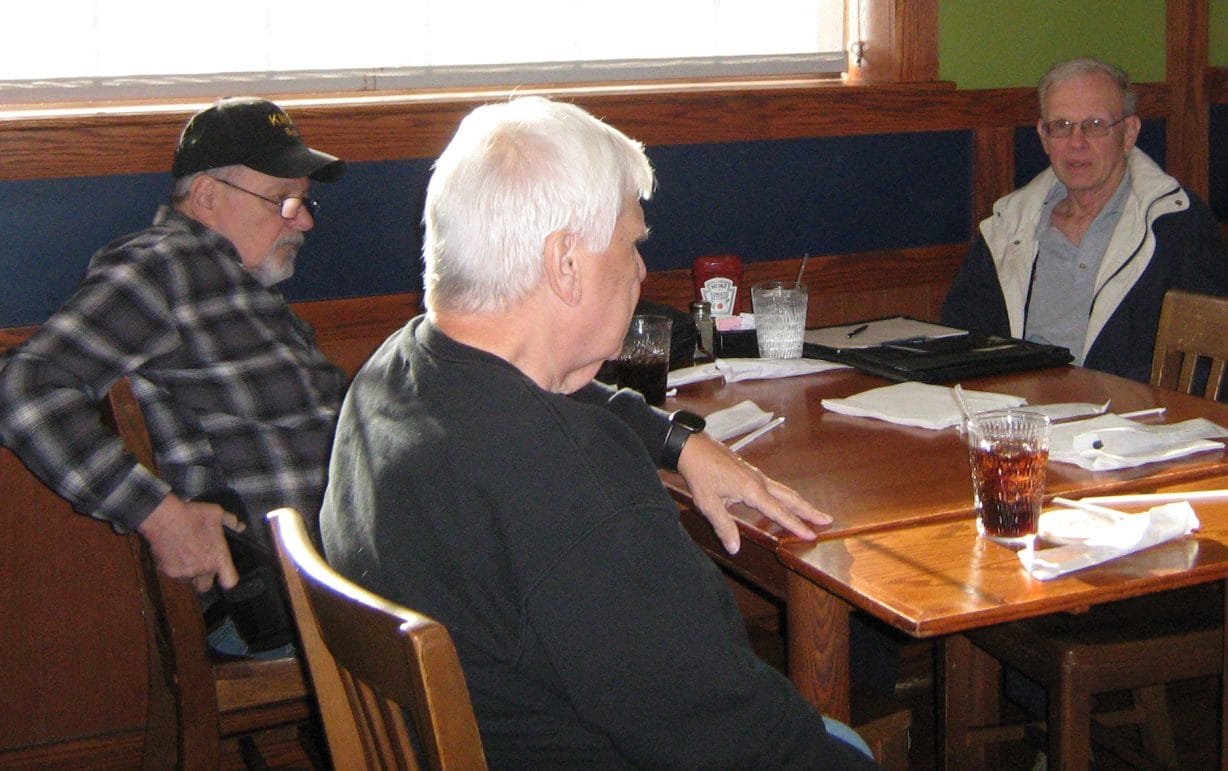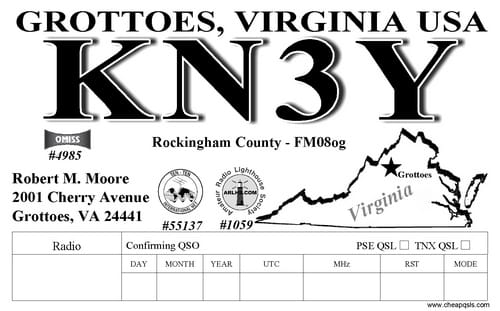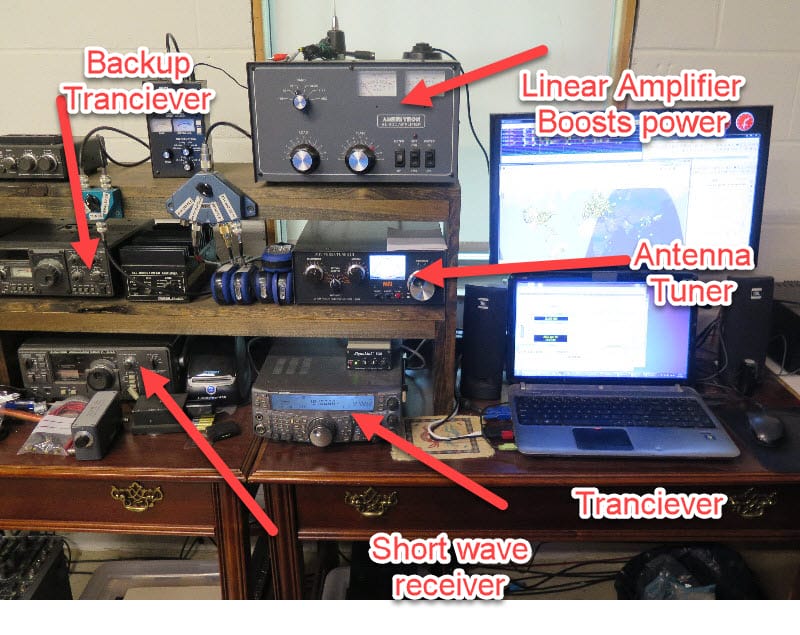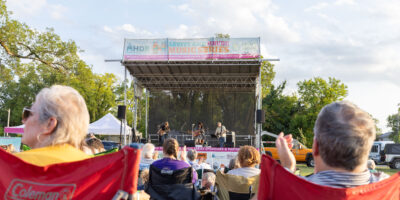By Stephanie Spernak, contributor
Every April 18 offers a chance for amateur radio operators everywhere—including in the Valley—to celebrate their skills as part of World Amateur Radio Day, an annual event designated by the International Amateur Radio Union.
But for area users of amateur radio, also called “ham” radio, the more exciting event comes in two months when dozens of them will come together to participate in a Field Day on June 22-23, where hams will gather and work together to connect with 40,000 other hams across North America.
Amateur radio is the use of a specific portion of the radio frequency spectrum for private, two-way communication. Commercial, government and military users have their own dedicated portions of radio frequencies, a regulatory approach the U.S. adopted in the early 1900s to manage the rapidly expanding use of the new radio technology.
Most hams belong to one or more amateur radio clubs, which number in the hundreds nationwide. Clubs help new operators improve their skills, learn more about technical issues, participate in contests to demonstrate their skills and organize volunteer radio service for public events or in emergencies. Clubs also serve as convenient locations for amateur radio license exams.
The Massanutten Amateur Radio Association, Inc (MARA), for instance, sponsors FCC amateur radio examinations and many public-service activities. The club is affiliated with the American Radio Relay League (ARRL).
MARA has about 76 members from Harrisonburg, Rockingham County and surrounding counties, said Gerald Nauman, call sign KN4FM, who serves as MARA’s president.
He joined MARA 26 years ago, after obtaining his license to operate amateur radio when he was 40. Now retired, Nauman studied mechanical engineering at Virginia Tech and worked as a circuit breaker design engineer and a product development manager in Earlysville.
He described amateur radio as “an opportunity for someone interested in technical things to learn more and use their knowledge.” Hams are able to use their communication skills to provide help in emergency situations such as flooding, hurricanes and earthquakes,” he said, adding “hopefully that is something you will never have to do.”
Nauman said the ham activity he most enjoys is providing volunteer radio communication at “public service events, mostly the ones out in the mountains where cell phone coverage is not available.”
“A big event for MARA,” Nauman said “is the motorcycle ride in the mountains, usually held the first weekend in October sponsored by the Washington Area Trail Riders. He said the two-day ride starts in Augusta County, goes through Rockingham County, and ends in West Virginia using mostly mountain trails but some highways. He said the event has attracted up to 100 riders from several states.
Nauman said another type of public service MARA members perform is the weekly connection to the ham radio network set up by all the area hospitals for emergency communications. MARA members on the hospital network send messages to each other to check that the equipment is in working order.
The MARA club has been meeting recently on the first Thursday of each month at the Wood Grill on Reservoir Road for dinner at 6 p.m. and the meeting at 7 p.m., which is open to anyone.
MARA is also jointly sponsoring the June 22-23 Field Day with the Valley Amateur Radio Association (VARA) in Staunton. Nauman said club members and guests will get together at the Rockingham County Fairgrounds, 4808 Valley Pike, to set up stations and contact other hams also participating in Field Day.

DXing for fun
Ham radio operators have developed their own jargon for many activities— some borrowed from telegraphic shorthand widely used in radio broadcasting’s early days.
For example, connecting with ham operators in distant countries is called “DXing.” The farther away the country, the more technically challenging it is to make radio contact.
DXing is one of the most popular ham activities, and clubs often hold DXing contests. Nauman said English is used for most international radio communication, “so that is good for Americans.”
Nauman said while he uses ham radio mostly for talking with local operators, he has “probably made radio contact with stations in about 100 other countries in Europe, Africa, and South America, but recently stopped counting.”
His most distant contact was in “Australia, which is about half way around the world and you can’t get further than that,” Nauman said.
To become licensed in the early days of ham radio, operators had to demonstrate proficiency in Morse Code during the license exam, a requirement that Nauman said he had to meet when he was first licensed. The FCC ultimately eliminated the Morse Code requirement for U.S. hams in 2006. Nauman said “there are still hams that regularly use Morse code, but I don’t.”
“CW” is more ham jargon that means using a “continuous wave” to transmit in Morse Code, which has a storied history in ham radio. Morse code is a series of dots and dashes with combinations that represent letters of the alphabet. The receiver of Morse Code has to transcribe these signals into words to form the message, a more challenging task than sending Morse Code, Nauman said.

With the QSL cards to prove it
Robert Moore, call sign KN3Y, said he was about 10 years old when he first became interested in amateur radio but didn’t get his license until he was in his thirties. “I enjoy public service, such as providing communication for community bike or motorcycle events,” but “amateur radio offers something for everyone,” Moore said.
He studied electronics at a two-year technical school in Pittsburgh and worked at Motorola as a technician and then as an engineer. He also worked at Rockwell Collins as a technician. Moore lives in Grottoes and has been a MARA member for five years and now serves as its treasurer.
He is an enthusiastic DXer and said he has contacted ham stations in more than 150 countries. And he has the QSL cards to prove it.
The term “QSL” comes from the Q-code used in early radio communication to confirm receipt of a transmission. QSL cards record details about the contact, such as the call signs of both stations, the time and date of contact, the radio frequency used and mode of transmission.
Because QSL cards serve as evidence of a ham’s technical skill in radio broadcasting over long distances, they are highly valued. Post cards were originally and still used as QSL cards and sent by mail. Today, online services provide QSL confirmations.
Moore provided a photo of the QSL card he created to send to another station confirming receipt of their transmission.
He was living and working in Florida when Hurricane Andrew struck in 1992. He and other members of the Motorola AR club in Boynton Beach set up radio communication at the Homestead Middle School that was serving as a shelter for hurricane victims. The ham volunteers used their radio equipment to help the shelter manager coordinate efforts and obtain supplies. But one of the hams was struck and killed by lightning while helping to unload a supply helicopter at the school.

Ham shacks and repeaters
Amateur radio operation require specific equipment that must be assembled correctly and ergonomically for long periods of activity. New operators need three devices to begin communicating–a transceiver (to send and receive radio signals), an antenna and power supply for these devices. Many more advanced devices and accessories are also available as an operator gains proficiency.
A “ham shack” is a location, often a spare room, or in the basement or garage, dedicated for ham equipment and operation.
Moore said that in addition to the “fellowship of like-minded individuals” ham clubs like MARA offer, these clubs also provide support for local repeaters.
Repeaters are essential equipment for ham clubs because they pick up low power signals and convert them into more powerful signals to extend the coverage area. Nauman said, “I would consider anything approaching 50 miles to be outstanding in this area,” .
MARA club members paid for the equipment to build and now maintain three repeaters, two located on the Massanutten Peak, east of Harrisonburg, reaching about 1,500 feet higher than the city’s elevation, a modest height. The third repeater is at the top of Great Northern Mountain, west of Mt. Jackson, VA.
Andrew Jezioro, call sign WA2ONG, and his wife, Barbara, call sign KQ4BAR, are retired and live in Massanutten. Like others in MARA, they say they value amateur radio for its focus on technical skills, public service and global communication.
Andrew said listening to short-wave radio when he was a teenager stirred his interest in ham radio. He said he has also built some of his own ham radio equipment, as many hams do.
Barbara said she was first licensed in 2022 as a technician, the entry level license. With encouragement from her husband, whom she called a “life-long ham,” she passed the exam for her general license, the next higher level. The FCC offers three license levels for ham radio operation. Extra is the highest. Hams with upper-level licenses have full operating privileges on more frequencies than are allocated for use by those with lower-level licenses.
Another avid DXer, Andrew has made contact with 190 countries, including Australia, China and Japan. During her much shorter tenure “on the air,” Barbara has made contact with five countries, including Australia and New Zealand.
Like Nauman, Moore, and the Jezioros, Bryan Daniels, call sign K4RMY, said he also enjoys the public service and emergency communications aspect of ham radio and has served as the Emergency Coordinator for Amateur Radio Emergency Services for Rockingham/Harrisonburg since 2005. He said he was called twice for possible emergencies but wasn’t needed.
Daniels also transitioned to amateur radio after experience with short wave radio. He said his father, an electrical engineer, bought him a short-wave radio as a Christmas gift when he was a teenager.
Daniels is a 1972 JMU graduate and a MARA member for 26 years. He taught for more than 20 years in the Rockingham County public school system and is now retired and living in Harrisonburg.
He said ham radio “is a very interesting hobby if you are interested in technology,” and clubs “provide comradery and discussions about ham radio.”
Daniels said that his DXing count is up to “71 countries logged and 61 confirmed,” by QSL cards, with Japan the most distant country.
He said he is on the radio only two days a week and uses a digital mode called FT8, available for use in 2017. Daniels said he also checks into several ham networks each week using voice mode for local stations, and digital mode to reach stations located around the country and globally.
Nicholas Wade, at 26, is part of the younger generation of hams. He is a member of both the MARA and VARA clubs and lives in Staunton and works as an automobile mechanic.
He said that he and his wife are hikers and have been to many places where there is no cell phone coverage. He remembered that his grandmother, who had a ham friend, talking about amateur radio and how useful it was for emergency communications.
Wade obtained his technician license in 2023. He said operating the radio “was hard to learn at first,” he said he thought ”all you had to do was set up the equipment and it would just work.” But his technical skills soon advanced. Wade said he will be in charge of the HF phone stations at this year’s Field Day event.
He enjoys the technical aspects of ham radio and emergency preparedness for public service, like the bike races, but he is not as interested in DXing. Wade said he uses his mobile ham radio for daily, local communications.
Now that his grandmother obtained her own amateur license about six months ago, Wade said that they connect on the ham radio frequencies.
Beyond the technical side of ham radio, Wade said that he really appreciates the fellowship you find at the ham clubs. He said that clubs provide the opportunity to meet and get to know other hams, often the older members with lots of experience, who have lots of “good ham stories to share.”
Computers in Ham radio
Daniels said he has seen increased use of digital mode with computer devices in ham radio now—both to communicate and to log contacts.
Digital technologies, Nauman said, are useful in emergency situations because “they can work with poor signal conditions that make voice communication next to impossible, and they also have means to correct any errors that may occur due to poor signal conditions.”
Nauman also said the “software has been written (usually) by hams that know about and write software during their day job,” so it’s not necessary for hams to know how to code to use digital equipment.
“With computers, Nauman said, “if your internet connection is gone, you can’t communicate. Ham radio can be used without the internet, so as long as you have a radio and power source you can communicate with someone. That is why ham radio is so important for emergency communications.”
Thanks for reading The Citizen, which won the Virginia Press Association’s 2022 News Sweepstakes award as the top online news site in Virginia. We’re independent. We’re local. We pay our contributors, and the money you give goes directly to the reporting. No overhead. No printing costs. Just facts, stories and context. We value your support.












